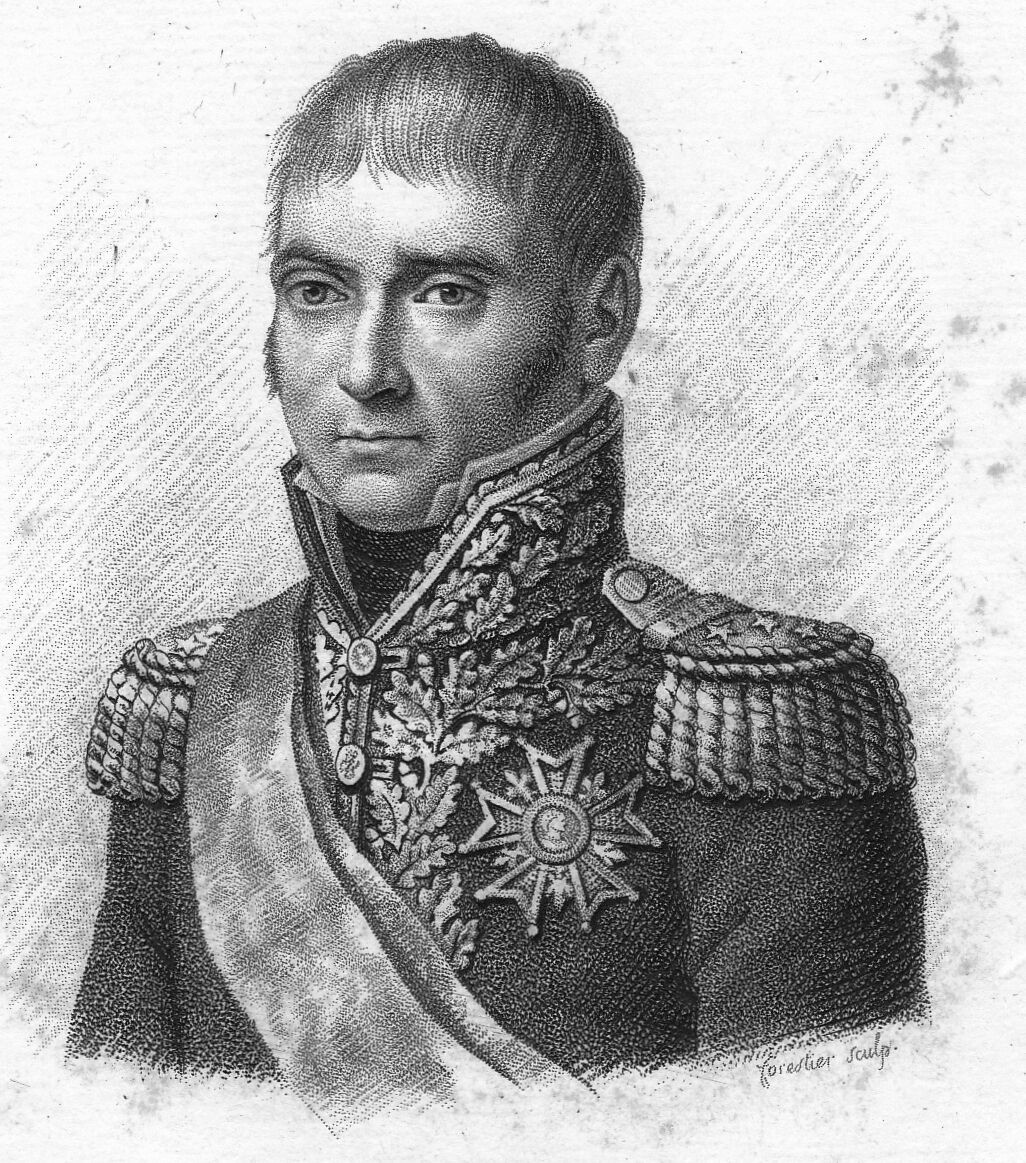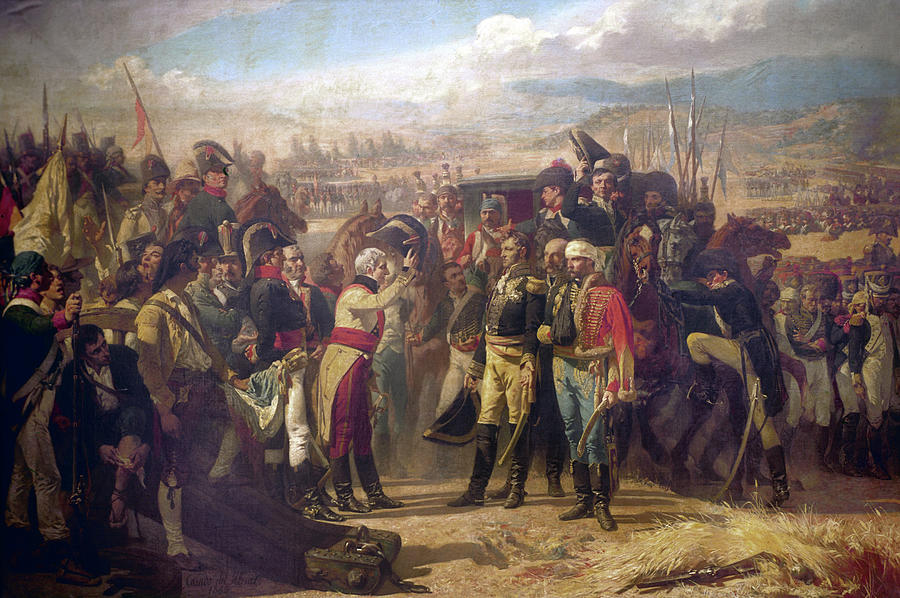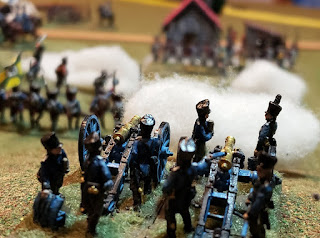Ok, enough with the silly alliteration. We played our bath-tub Bailen scenario last night. The game was a howler. A number of mistakes were made but we all had a fine time and finished the game, for a change. See the previous post for the scenario.
Jay, arriving first, led the Spanish as General Reding while Bill got the Spanish left as the French émigré Coupigny. I had the role of Dupont trying to smash the Spanish out of my way before the rest of the Spanish army showed up behind me. Carl showed up later and got command of the French left.
Using reserve movement (columns at a distance from the enemy), I pushed the lead French units towards the Spanish left, thinking that Coupigny’s inept status made them a target. In fact, being inept isn’t such a problem for defenders. Anyway, the dice determined that the renegade French aristocrat was alert this day.
After a
battering from French skirmishers, the Spanish pulled theirs back. The French
skirmishers dropped back beyond the effective musket range of formed troops and
shot at the formed line, causing some hits. Nothing as irritating as being hit
without being able to reply.
The action grew hotter and I forgot to take photos for a while. The Spanish skirmish screen came out again and ours charged, beating back all save the Walloon Guard skirmishers. I have a question in to the designer about what skirmish screens can do. Now some formed French battalions charged and were repulsed.
Meanwhile, on
our left, Reding’s division slowly rolled forward in line (ah, those old regime
forces). Carl made ready to receive them. I sent over our lone elite unit, the Marines
of the Guard/converged grenadiers. They look like Old Guard grenadiers. At
least they aren’t Civil War or WWII figures. There are other substitutions on
the table. All are at least from the 1792 – 1815 period. But I digress.
Jay sent the skirmish screens of two Spanish regular battalions to charge Carl’s two batteries of artillery. Canister didn’t stop either attack and the gunners evaded behind their nearby Spanish “Swiss” supports (look like bicorn French). A turn later, Jay realized that they should not have been allowed to close since skirmishers aren’t allowed within 2” of formed troops. I had deployed the supports on either side of the guns, thinking that the crews could hide behind them if charged and forgot about the proximity rule. Rather than reconstruct the situation, we played on. Soon we broke for dinner and the excellent cake my wife made for dessert. And Carl's rosé.
Carl had his
two line battalions charge the Spanish regulars; his right battalion won and
his left battalion failed badly. Fortunately, the Guards/grenadiers came up
between the two and charged. Both sides scored numerous hits in the musket fire
preceding the charge and in the ensuing close combat. When the smoke cleared,
the Spanish regulars had routed, bestowing morale hits on nearby friends and
causing another rout, while the French elites were pretty banged up, in need of some serious R&R.
Spanish
artillery routed the Garde de Paris, (who look suspiciously like Nassau troops)
putting morale hits on nearby friends. Both sides along Coupigny’s line were
pretty banged up, with a number of units close to routing. French brigadier Chabert,
trying to rally a French battalion in the front line, was shot and mortally
wounded, calling for my wounded officer vignette. The Spanish line withdrew behind
the crest. Weakened French units, unable to advance, sent their skirmishers
out. Some moved up to the crest and dispatched a Spanish unit with musket fire.
Meanwhile French Chasseurs a Cheval charged a Spanish militia unit (was that
the New Orleans Free Men of Color?), who only scored one hit in the ensuing
fracas and were routed. The Chasseurs pursued into a regular battalion that was
unable to fire or change formation. Coupigny joined them.
Reding tried to
rally a badly shot up battalion in the center but was chased off the field with
them when they routed under skirmisher fire. At the end of the 8th turn
during this furball, the Spanish rolled for the arrival of Castanos with the
rest of the Spanish army behind us, needing a six to end the game. He didn’t
get it. Carl and I breathed. The scrum continued. More units routed or became weakened.
We counted up routed and weakened units at the end of the 9th turn. The
score said 6 ½ Spanish units, counting routed (including Reding) and weakened
units, which just reached the Spanish break point, while French Losses were 5,
1 away from ours. We had broken through. Good thing they ran away, or else we
would have had to.
We asked Bill
(Jay had to leave a little earlier) to roll and see if Castanos appeared,
needing a 4, 5 or 6. He got it and we knew just how close the game had been. Later,
while taking photos of the end game, I discovered that we had left a routed
French unit on the table, marked as weakened, so French losses were actually 5 ½,
just a half unit from breaking. A Spanish volunteer unit on the table wasn’t
marked as weakened, but had enough hits to warrant that status. That put the
Spanish losses up to 7, a half point over the line. The remaining photos are all of the end game.
A couple
things: in future games, when a unit is routed, we need to mark it with a red
disc (flip over the yellow ones we use to show weakened units) and make sure
morale hits are marked before removing them from the table. Also, the skirmish screens
of half strength units should be indicated by single figures.
As for the things done by our skirmishers, questions are in to Keith Flint, the designer. He will let us know if we did the right thing. Among our mistakes: forgot the Spanish get -1 for initiative rolls, skirmishers getting within 2" of formed troops, probably some others.
Edit: Keith got back to us. Weakened units can only send skirmish screens closer to the enemy if a general is attached to the parent unit. And he reiterated that the charge against artillery was negated by the presence of formed troops. Live and learn.
MAJOR EDIT: from the rules: Generals attached to a routing unit remain on the table and are moved back 6” along the line of initial retreat.
In our reduced 15mm scale, that would be 4". The upshot is that Spanish losses at the end of the 9th turn were 6, half a unit shy of their breakpoint, since Reding did not rout off the table. Castanos' two divisions and the raiders arrived. The French threw down their weapons as in the real battle and all went into captivity, giving Napoleon apoplexy.
I still like the full size Bailen scenario but can see it will not be playable in an evening. Well, I can look at it.
Bill, having had two battalions beat up by a light cavalry unit, opined that cavalry are too strong. I think the answer is forming square, which no one has yet done in any of our games. That said, I downgraded the French cavalry to provisional in this scenario since they come equipped with generals, who give a bonus in combat and can rally off hits. I did want them better than the Spanish cavalry who lacked decent horses. The French rode down some infantry at the real battle. Anyway, we like these rules and will continue to use them. The Fencibles are out of action after this until late September or early October. Real Life (gasp) intrudes and puts a damper on our 19th Century follies. We'll be back (in Ahnold Terminator accent).






































